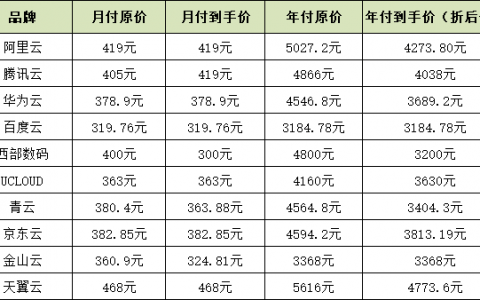本站一直缺少类似方面教程,今天就补充一下。其中rsync是一个远程数据同步工具,使用方法可以参考之前的文章《linux系统下Rsync远程数据同步命令介绍以及使用整理》 ,但数据更新以后数据还需要手工同步,无法实现自动化。这里就借助资料配置一个rsync+innotify实现数据实时同步,解决手工处理烦恼。
环境准备:centos三台
源数据服务器:192.168.1.8
目标服务器:192.168.1.9 192.168.1.10
测试目的:将源服务器的/home/21yunwei 自动同步到目标服务器。
为了测试,关闭selinux以及iptables(iptables也可以放行873端口,不用关闭)
一,两个目标服务器配置
1,安装rsync和xinetd,centos下是通过xinetd管理rsync。
yum install rsync xinetd -y
编辑vi /etc/xinetd.d/rsync 设置rsync启动,即disable = no 。默认是不启动yes。
修改完以后启动xinetd:/etc/init.d/xinetd start
netstat -tnlp |grep 873 如果看到有xinetd服务,说明启动成功。
2,创建rsyncd.conf配置文件并修改参数。
vi /etc/rsyncd.conf
log file = /var/log/rsyncd.log pidfile = /var/run/rsyncd.pid lock file = /var/run/rsync.lock secrets file = /etc/rsync.pass motd file = /etc/rsyncd.Motd [home_21yunwei] path = /home/21yunwei/ comment = home_21yunwei uid = root gid = root port=873 use chroot = no read only = no list = no max connections = 200 timeout = 600 auth users = 21yunwei hosts allow = 192.168.1.8 hosts deny = 192.168.1.200
其中参数说明这里列举一下:
log file = /var/log/rsyncd.log #日志文件位置,启动rsync后自动产生这个文件,无需提前创建 pidfile = /var/run/rsyncd.pid #pid文件的存放位置 lock file = /var/run/rsync.lock #支持max connections参数的锁文件 secrets file = /etc/rsync.pass #用户认证配置文件,里面保存用户名称和密码,后面会创建这个文件 motd file = /etc/rsyncd.Motd #rsync启动时欢迎信息页面文件位置(文件内容自定义) [home_21yunwei] #自定义名称 path = /home/21yunwei/ #rsync服务端数据目录路径 comment = home_21yunwei #模块名称与[home_21yunwei]自定义名称相同 uid = root #设置rsync运行权限为root gid = root #设置rsync运行权限为root port=873 #默认端口 use chroot = no #默认为true,修改为no,增加对目录文件软连接的备份 read only = no #设置rsync服务端文件为读写权限 list = no #不显示rsync服务端资源列表 max connections = 200 #最大连接数 timeout = 600 #设置超时时间 auth users = 21yunwei #执行数据同步的用户名,可以设置多个,用英文状态下逗号隔开 hosts allow = 192.168.1.8 #允许进行数据同步的客户端IP地址,可以设置多个,用英文状态下逗号隔开 hosts deny = 192.168.1.200 #禁止数据同步的客户端IP地址,可以设置多个,用英文状态下逗号隔开
3,创建用户认证文件
vi /etc/rsync.pass 21yunwei:123456 #格式,用户名:密码,可以设置多个,每行一个用户名:密码
4,设置文件权限
chmod 600 /etc/rsyncd.conf
chmod 600 /etc/rsync.pass
如果不设置这个权限,那么会报错password file must not be other-accessible。
重启xinetd服务:
/etc/init.d/xinetd restart
二,源数据服务器配置
1,安装rsync和xinetd
基本上目标服务器安装是一样的,安装完将服务设置成启动。启动xinetd服务。
2,创建认证密码文件
vi /etc/passwd.txt 写入:
123456 #密码
设置权限:
chmod 600 /etc/passwd.txt
如果不设置权限会报错:password file must not be other-accessible
3,测试源服务器192.168.1.8到两台目标服务器之间数据同步情况。
测试目的:将/home/21yunwei下的文件同步到两台目标服务器。
我们touch /home/21yunwei{1..10}.php 后执行测试:
rsync -avz --port=873 --delete /home/21yunwei/ 21yunwei@192.168.1.9::home_21yunwei --password-file=/etc/passwd.txt rsync -avz --port=873 --delete /home/21yunwei/ 21yunwei@192.168.1.10::home_21yunwei --password-file=/etc/passwd.txt
测试结果:
[root@kvmserver home]# rsync -avz --port=873 --delete /home/21yunwei/ 21yunwei@192.168.1.10::home_21yunwei --password-file=/etc/passwd.txt sending incremental file list ./ 1.php 10.php 2.php 3.php 4.php 5.php 6.php 7.php 8.php 9.php sent 557 bytes received 206 bytes 1526.00 bytes/sec total size is 4 speedup is 0.01
查看下10目标服务器目录:
[root@web10 home]# ll 21yunwei/ total 8 -rw-r--r-- 1 root root 0 Sep 1 15:36 10.php -rw-r--r-- 1 root root 4 Sep 1 15:43 1.php -rw-r--r-- 1 root root 0 Sep 1 15:36 2.php -rw-r--r-- 1 root root 0 Sep 1 15:36 3.php -rw-r--r-- 1 root root 0 Sep 1 15:36 4.php -rw-r--r-- 1 root root 0 Sep 1 15:36 5.php -rw-r--r-- 1 root root 0 Sep 1 15:36 6.php -rw-r--r-- 1 root root 0 Sep 1 15:36 7.php -rw-r--r-- 1 root root 0 Sep 1 15:36 8.php -rw-r--r-- 1 root root 0 Sep 1 15:36 9.php
两台服务器测试完毕,效果测试同步数据没问题。
三,源服务器安装Inotify-tools工具,实时触发rsync进行同步。
1、查看服务器内核是否支持inotify
ll /proc/sys/fs/inotify
[root@kvmserver home]# ll /proc/sys/fs/inotify total 0 -rw-r--r-- 1 root root 0 Sep 1 17:20 max_queued_events -rw-r--r-- 1 root root 0 Sep 1 17:20 max_user_instances -rw-r--r-- 1 root root 0 Sep 1 17:20 max_user_watches
如果出现上述内容,说明支持innotify。
2,安装inotify-tools工具
下载http://github.com/downloads/rvoicilas/inotify-tools/inotify-tools-3.14.tar.gz 压缩包并进行解压,编译、安装。
tar zxvf inotify-tools-3.14.tar.gz cd inotify-tools-3.14 ./configure --prefix=/usr/local/inotify make make install
3,设置环境变量并建立软链接。
echo "PATH=/usr/local/inotify/bin:$PATH" >>;/etc/profile.d/inotify.sh source /etc/profile.d/inotify.sh echo "/usr/local/inotify/lib" >/etc/ld.so.conf.d/inotify.conf ln -s /usr/local/inotify/include /usr/include/inotify
4,修改inotify默认参数。
修改参数:
sysctl -w fs.inotify.max_queued_events="99999999" sysctl -w fs.inotify.max_user_watches="99999999" sysctl -w fs.inotify.max_user_instances="65535"
编辑vi /etc/sysctl.conf
fs.inotify.max_queued_events=99999999 fs.inotify.max_user_watches=99999999 fs.inotify.max_user_instances=65535
参数说明:
max_queued_events:
inotify队列最大长度,如果值太小,会出现”** Event Queue Overflow **”错误,导致监控文件不准确
max_user_watches:
要同步的文件包含多少目录。防止该值太小导致失败,尤其是小文件目录比较多的情况。
max_user_instances:
每个用户创建inotify实例最大值。
5、创建脚本,实时触发rsync进行同步
#!/bin/sh
srcdir=/home/21yunwei/
dstdir=home_21yunwei
excludedir=/usr/local/inotify/exclude.list
rsyncuser=21yunwei
rsyncpassdir=/etc/passwd.txt
dstip="192.168.1.9 192.168.1.10"
for ip in $dstip
do
rsync -avH --port=873 --progress --delete --exclude-from=$excludedir $srcdir $rsyncuser@$ip::$dstdir --password-file=$rsyncpassdir
done
/usr/local/inotify/bin/inotifywait -mrq --timefmt '%d/%m/%y %H:%M' --format '%T %w%f%e' -e close_write,modify,delete,create,attrib,move $srcdir | while read file
do
for ip in $dstip
do
rsync -avH --port=873 --progress --delete --exclude-from=$excludedir $srcdir $rsyncuser@$ip::$dstdir --password-file=$rsyncpassdir
echo " ${file} was rsynced" >> /tmp/rsync.log 2>&1
done
done
脚本参数说明:
srcdir=/home/21yunwei/ #源服务器同步目录
dstdir=home_21yunwei #目标服务器rsync同步目录模块名称
excludedir=/usr/local/inotify/exclude.list
#不需要同步的目录,如果有多个,每一行写一个目录,使用相对于同步模块的路径;
#例如:不需要同步/home/21yunwei/目录下的a目录和b目录下面的b1目录,exclude.list文件可以这样写
a/
b/b1/
rsyncuser=21yunwei #目标服务器rsync同步用户名
rsyncpassdir=/etc/passwd.txt #目标服务器rsync同步用户的密码在源服务器的存放路径
dstip=”192.168.1.9 192.168.1.10″ #目标服务器ip,多个ip用空格分开
/tmp/rsync.log #脚本运行日志记录
6、设置脚本开机自动执行
vi /etc/rc.d/rc.local /bin/bash /usr/local/inotify/rsync.sh & #设置开机自动并在后台运行脚本
重启服务器。
7,测试inotify实时触发rsync同步脚本是否正常运行。
我们在源服务器的/home/21yunwei 创建文件:
[root@kvmserver 21yunwei]# echo "test inotify" >> 21yunwei.php
[root@kvmserver 21yunwei]#
sending incremental file list
./
21yunwei.php
13 100% 0.00kB/s 0:00:00 (xfer#1, to-check=8/14)
sent 268 bytes received 30 bytes 596.00 bytes/sec
total size is 17 speedup is 0.06
sending incremental file list
21yunwei.php
13 100% 0.00kB/s 0:00:00 (xfer#1, to-check=8/14)
然后进去192.168.1.9 和192.168.1.10目录查看, 查看这两个文件也是存在的。 删除也是一样:
[root@web10 21yunwei]# ll total 12 -rw-r--r-- 1 root root 0 Sep 1 15:36 10.php -rw-r--r-- 1 root root 4 Sep 1 15:43 1.php -rw-r--r-- 1 root root 0 Sep 1 17:49 1.txt -rw-r--r-- 1 root root 13 Sep 1 17:51 21yunwei.php
再多测试一道,我们从svn更新下内容到/home/21yunwei,看下是否web 9和web10两个节点也发生变化:
[root@kvmserver 21yunwei]# svn co svn://59.46.x.x/21yunweinew /home/21yunwei/ --username=21yunwei --password=xxxxxx
进入web9和web10,发现新更新的数据也都是在的。
inotify常用参数:
inotify参数 -m 是保持一直监听 -r 是递归查看目录 -q 是打印出事件 -e create,move,delete,modify,attrib 是指 “监听 创建 移动 删除 写入 权限” 事件
至此,inotify+rsync设置完成。
本操作的顺利实现,主要参考了文章http://www.osyunwei.com/archives/7435.html ,特此说明。
转载请注明:西数超哥博客www.ysidc.top» Linux环境下通过rsync+inotify实现数据实时同步
https://www.ysidc.top 西数超哥博客,数据库,西数超哥,虚拟主机,域名注册,域名,云服务器,云主机,云建站,ysidc.top











